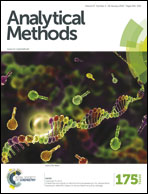Detection of fatty acid-binding protein 5 and small proline-rich protein 3 for forensic vaginal fluid identification by ELISA
Abstract
Vaginal fluid identification is often required for forensic investigation of sexual assault cases. However, standardized assays for vaginal fluid identification have not been developed. Recently, we identified human fatty acid-binding protein 5 (FABP5) and human small proline-rich protein 3 (SPRR3) as characteristic vaginal fluid proteins by performing peptide mass fingerprinting. In this study, we developed enzyme-linked immunosorbent assays (ELISAs) for detecting FABP5 and SPRR3 and evaluated the specificity and sensitivity of these assays for detecting vaginal fluid. The data indicate that the levels of both protein markers were significantly higher in vaginal fluids and vaginal fluid stains than in other body fluids (nasal secretions, saliva, urine, semen, blood, and sweat). The dilution limits of FABP5 and SPRR3 ELISAs equated to 0.06 μL and 0.03 μL, respectively, of vaginal fluid extracts, thought to be sufficient for application to real forensic samples. Furthermore, the levels of both protein markers are not lowered during the menstrual cycle. The protein markers were also detectable in menopausal samples, taken from menopausal and pregnant volunteers. The protein markers were detected in some aged stains. FABP5 ELISA showed a better detection rate in inter laboratory tests using simulated casework samples compared to SPRR3 ELISA. Overall, FABP5 can be more useful for the identification of vaginal fluid for forensic investigation, although both FABP5 and SPRR3 assays can potentially be useful.


 Please wait while we load your content...
Please wait while we load your content...